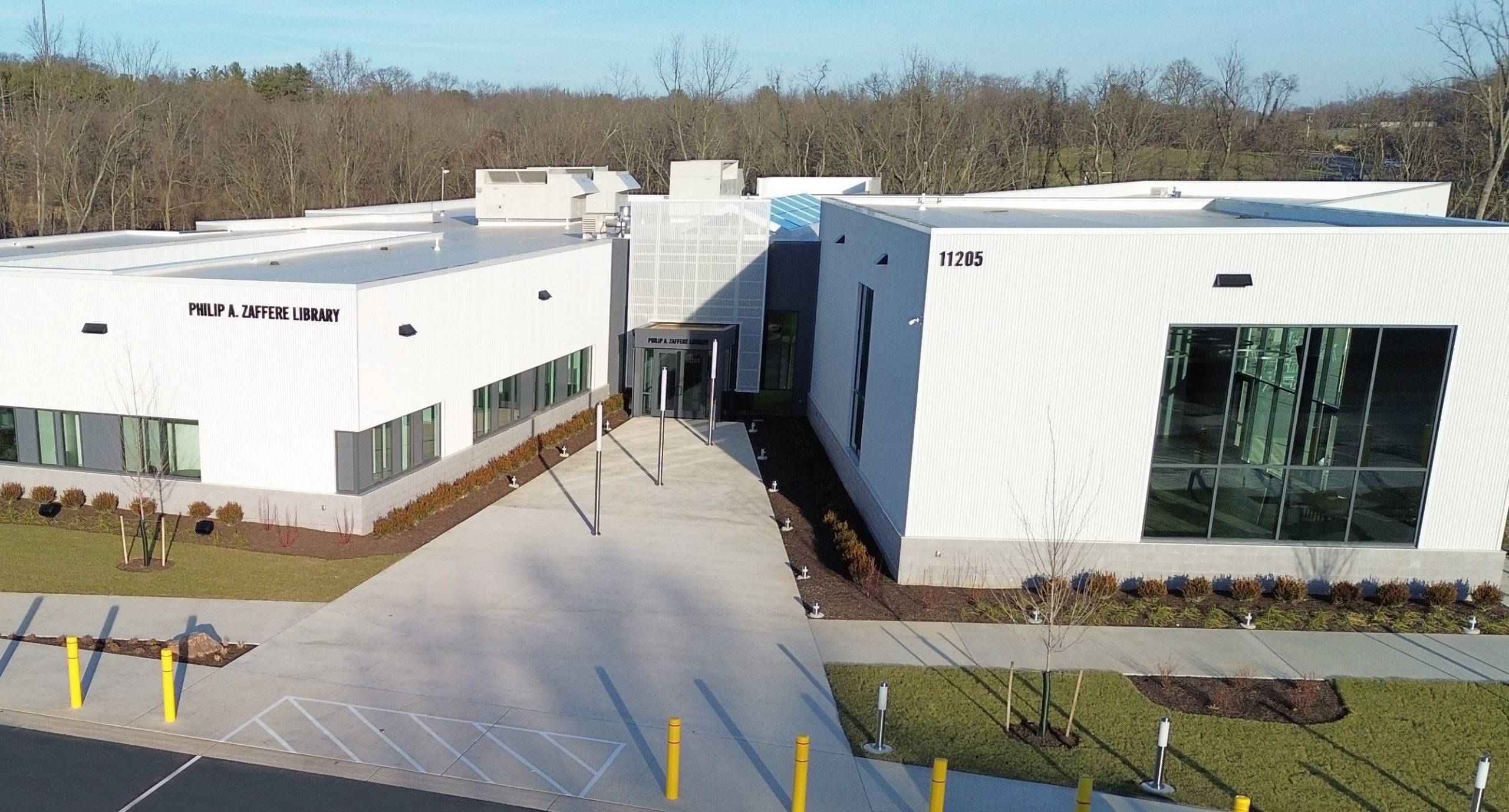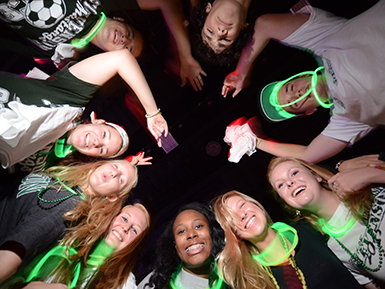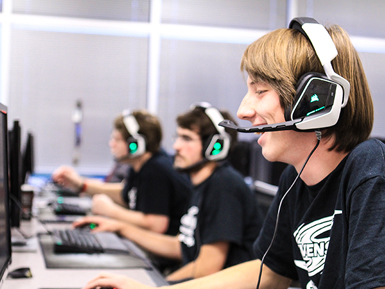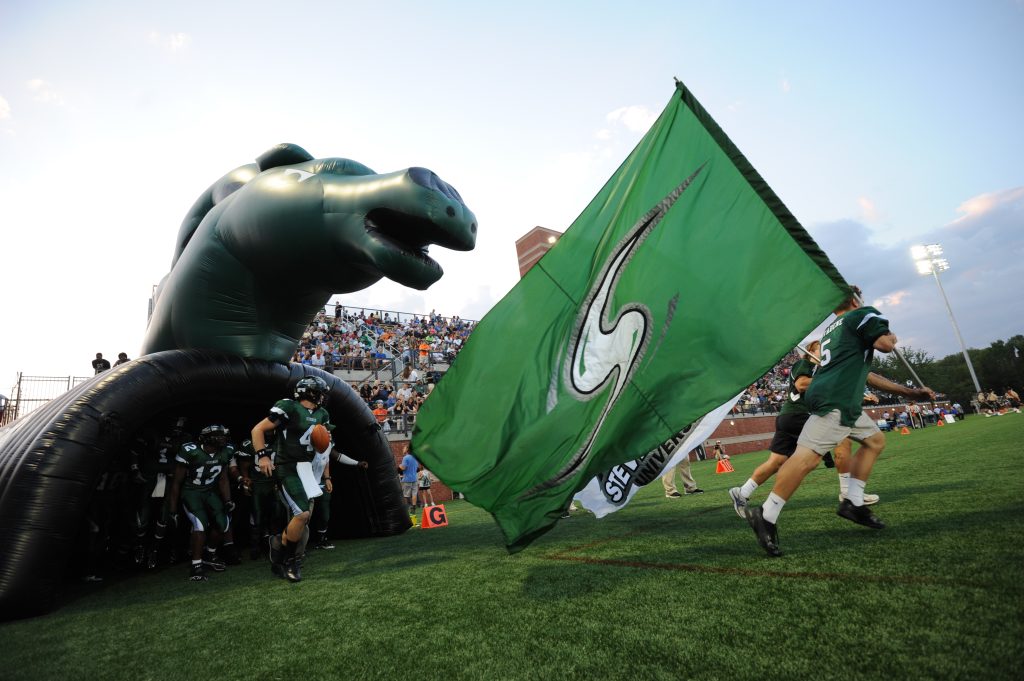������̳ Emergency Procedures
Reference Guide
The ������̳ Emergency Procedures Reference Guide provides helpful information to employees and students should emergency situations arise on campus.
For all campus emergencies call Campus Safety
Dial x4500 or 443-352-4500
Hostage or Barricade
If a hostage or barricade situation occurs on the campus property do not attempt to negotiate. Establish a line of communication to get information only. If there is communication regarding the hostage/barricade over the telephone, attempt to maintain communication with the caller to gain additional information until authorities arrive.
- Call Campus Safety immediately at x4500 or 443-352-4500.
- Campus Safety will notify the police.
- Campus Safety will meet the police at the entrance of the University property and escort them to the scene. At this time, law enforcement is responsible for the resolution, investigation, and processing of the scene with assistance from Campus Safety.
- DO NOT APPROACH/CONFRONT A PERSON SUSPECTED OF HAVING A WEAPON. Make every effort to keep your eyes on the suspect until help arrives so that you can point him/her out to the police.
- It is best to have the police officer confront the suspect and conduct the search. The police should take possession of the firearm, weapon or explosive.
- Campus Safety will ask the police officer to photograph the weapon.
- Treat all firearms, weapons or explosives as if they were loaded. If one is found, do not pick it up but report the location to Campus Safety, immediately at x4500 or 443-352-4500.
Sexual Assault or Rape
Special sensitivity is necessary when dealing with sexual assault and rape. The primary concerns are the physical and emotional health and safety of the victim, the safety of the University community, protection of the victim from undue embarrassment or publicity, and ensuring confidentiality.
- When confronted with the possibility that a sexual assault or rape has occurred, attend to the needs of the victim and ask what the victim would like to do.
- Encourage the victim to seek medical attention or to go to the Wellness Center (x4200).
- The following procedures should be followed to preserve evidence:
- Do not clean up the location where the act was committed, e.g., room, car.
- The victim should not bathe, shower, or douche prior to the medical examination. The doctor will give instruction on appropriate hygiene and medications to protect health.
- Do not discard any clothing worn during the assault; put it in a paper bag (do not use a plastic bag).
- Call Campus Safety at x4500, or 443-352-4500. Inform the victim that a confidential report can be filed. (Pursuant to the Clery Act, Title IX, ������̳ employees are required to report all allegations of sexual assault to Campus Safety or the Vice President of Human Resources/Title IX Coordinator).
- Campus Safety or the Vice President of Human Resources/Title IX Coordinator will inform the victim of the right to press charges and will proceed with the university investigation. Arrangements can be made to transport the victim to a medical facility, and the Wellness Center and Residence Life staff (if appropriate) can be called for support.
For more details on procedures to follow in the aftermath of sexual assault or rape, see SU Policies.
Hazardous Materials
(chemical spills and leaks, gas leaks, noxious fumes & exposure control plan)
The procedures described below shall be followed in order to allow for proper clean-up and protection of University faculty, staff, students, and environment in the event of a hazardous material spill.
If Outside
- Move up wind away from spilled material.
- Contact Campus Safety at the Greenspring Campus by dialing “0” on any in house phone or on the Owings Mills Campus by dialing x4500 or 443-352-4500. Be prepared to report the location and the identity or nature of the spilled material, if known.
- Campus Safety will consult with the Director of Laboratory Services, Laboratory Safety Managers and Laboratory Managers.
- Be sure to specify if anyone is injured so that 911 can be contacted.
- Campus Safety and other Emergency Personnel (if needed) will provide direction and determine when it is safe to return to the area.
If Inside (not including a laboratory)
- Avoid direct or indirect contact with the spilled material. If an individual is exposed by direct contact to a hazardous material, they should proceed to the nearest water source to flush the exposed skin. All contaminated clothing should be removed and put into a plastic bag.
- Contact Campus Safety at the Greenspring Campus by dialing “0” on any in house phone or on the Owings Mills Campus by dialing x4500 or 443-352-4500. Be prepared to report the location and identity of the spilled material, if known.
- Campus Safety will consult with the Director of Laboratory Services, Laboratory Safety Manager and Laboratory Managers.
- Individuals responding to the spill will refer to the SDS for proper response procedures.
- All individuals should be removed from the spill area until clean-up is complete and Campus Safety has given permission to re-enter the space. It is recommended that all individuals move outside or to an alternate location that does not have a common ventilation system.
- If the substance is airborne, cover your nose and mouth with layers of fabric (such as a cotton t-shirt, handkerchief, towel or several layers of paper towels).
- Campus Safety will determine whether medical observation or treatment is necessary so that 911 can be contacted.
Additional information on for Hazardous Materials in laboratories can be found on the
Medical Emergencies
In the event of a medical emergency, Call 911 and Campus Safety at x4500 or 443-352-4500 and/or request that another person do so.
- Stay at the emergency scene to relay instructions to others, if the scene is safe and secure.
- Do not move the individual unless his/her location is potentially dangerous.
- Reassure victim and keep them quiet and comfortable.
- Keep all interested personnel and students away from the area.
If 911 is needed, report to 911 operator the emergency, the specific location, and the campus entrance to be used. State the nature of the emergency, number of victims, and any other pertinent information. Campus Safety will report to the specified entrance to escort medical personnel to the emergency scene.
Campus Safety will notify Human Resources (x2427) if the medical emergency involves faculty or staff; Human Resources will coordinate notification of family members if necessary. For students – the Vice President for Student Affairs (x4306) will be notified. Student Affairs will coordinate notification of family members, if necessary.
In the event of a contagious condition, the Assistant Vice President of the Wellness Center (x4200) will contact the Baltimore County Health Department for instruction and intervention.
Maintenance Emergencies
Maintenance emergencies include issues or events such as loss of electrical power, rushing water from broken pipes, complete lack of water, lack of heat, or lack of air conditioning if the outside temperature is above
86 degrees Fahrenheit.
Contact Campus Safety at x4500 or 443-352-4500 to provide pertinent information including your name, telephone number, location, the location of the emergency, and the nature of the emergency.
The Facilities Department will be notified during business hours. If after hours, Campus Safety will contact the appropriate Facilities staff member.
Facilities personnel will be dispatched to the location as soon as possible.
Hate Crimes
A hate crime is defined as evidence that exhibits animosity on the part of the person committing the act against a person or group because of that person’s or group’s race, color, religious, beliefs, national origin, or sexual orientation.
- The person identifying the hate message should notify Campus Safety at x4500 or 443-352-4500 immediately.
- A Campus Safety will conduct an investigation including photographing evidence and speaking to witnesses.
- Campus Safety will report the incident to the Vice President for Human Resources who may further investigate and determine potential disciplinary action.
- In the case of physical evidence or graffiti, the Vice President for Human Resources will notify the Facilities department when the location can be cleaned.
Attempted Suicide
- In the event that a faculty or staff member encounters an individual who indicates a desire or INTENTION to harm her/himself, Campus Safety (and Residence Life staff if in the residential areas) should be called immediately at x4500 or 443-352-4500. In the event of a suicide ATTEMPT, immediately call 911 and Campus Safety at x4500, or 443-352-4500.
- Stay with the individual until Campus Safety can respond.
- If a weapon is involved, leave the area immediately and call Campus Safety.
- Campus Safety or Student Affairs/Residence Life staff (in consultation with the Assistant Vice President (AVP) of the Wellness Center (if available) will make a determination as to whether it is advisable to go to the Emergency Room. If so, 911 will be called and the person will be transported to the nearest hospital.
- The AVP of the Wellness Center will work with the Associate Vice President and Dean of Students to coordinate notification of family members.
- The Dean of Students will work with the AVP of the Wellness Center and the student and family to determine the conditions upon which the student may return to ������̳; these terms must be communicated to the Director of Safety.
Death on Campus
- Upon discovery, call Campus Safety immediately at x4500 or 443-352-4500. Campus Safety will call the police.
- Keep everyone away from the deceased.
- Wait at the location until Campus Safety and/or the police arrive.
- Campus Safety will secure the area.
- Campus Safety will be posted at the entrance to escort police to the specific area.
- Campus Safety will notify Human Resources and the President’s Office if the death involved a faculty or staff member. These offices coordinate notification of family members.
- Campus Safety will notify the Vice President of Student Affairs and the Vice President and Chief of Staff if the death involved a student. These offices will coordinate notification of family members.
- The Vice President of Human Resources and the Vice President of Student Affairs will coordinate the Crisis Management Team, campus intervention, and communication, including the Wellness Center x4200 (443-352-4200) and the Residence Life staff x4007 (443-352-4007), if appropriate, and Marketing and Digital Communications x4494 (443-352-4494).
Finding a Suspicious Object/Package
- Once you discover an object, don’t touch it any further. Make a note of what it looks like, smells like, sounds like and then clear the area.
- Do not use a cellphone or two-way radio device. This may trigger an explosion of the item. Go yourself, or send someone else, to the closest landline telephone to contact Campus Safety.
- Report the location of the suspicious object to Campus Safety.
- IN THE EVENT THAT A SUSPICIOUS OBJECT IS FOUND, IT SHOULD NOT BE TOUCHED OR MOVED. Warn others to stay away from the suspicious object and maintain at least a 1,000 ft. clearance area.
- When the police arrive, they are in command, and their orders are to be followed.
- Follow instructions of Police or Campus Safety regarding where to go on or off campus to be safe.
- All personnel should be restricted from entering the building until the police approve access.
Bomb Threat
If you receive a bomb threat by phone:
Use the telephone checklist below to obtain as much information from and about the caller as possible.
- Listen carefully—do not interrupt
- Do not hang up—get a message to someone nearby to call Campus Safety
- If displayed, write down the phone number from which the call originates
- Record
- Date
- Time
- Exact words of the caller
- Listen for background noises: Accent? Unusual voice characteristics
- The caller was Male____ Female___ Adult________ Child_______ Age____
- Do not use the same phone again until Campus Safety gives the okay
- Write down the exact wording of the threat
If possible, ask the caller the following questions:
- Can you tell me when the bomb is set to explode?
- What will make it detonate?
- Where is the bomb now?
- What kind of bomb is it?
- What does it look like?
- Why did you place the bomb?
- What type of explosive is it?
- Is the caller the person who actually placed the device?
- Do not talk on any radio or cell phone within 100 yards of the suspected bomb as this might cause detonation. Turn these devices off.
- Do not touch light switches.
If bomb threat is received by voice mail:
- Save the voice mail and call 911 and Campus Safety.
If bomb threat is received by email:
- Do not delete the email. Make a hard copy and call 911 and Campus Safety.
If it is determined that an EVACUATION is necessary, calmly leave the building and remain at least 1,000 feet from the building. Do not go back inside until advised by Campus Safety that it is safe to do so.
AED Locations
An AED is a lightweight, portable device that delivers an electric shock through the chest to the heart. The shock can potentially stop an irregular heart beat (arrhythmia) and allow a normal rhythm to resume following sudden cardiac arrest (SCA). SCA occurs when the heart malfunctions and stops beating unexpectedly.
Greenspring Campus:
- Administration Lobby, next to the men’s restroom
- Gymnasium, southeast corner wall by closet, near door to Pavilion
- Manuszak Fitness Center, west wall entrance, between SU 25 and entry doors
- Theatre
Owings Mills Campus:
- Ratcliffe Community Center, wall outside Campus Safety office
- Patapsco Hall (104), next to quad doors and laundry room
- Dulaney Hall (112), inside parking side door on the right
- Caves 1st Floor, next to racquet ball court
- Caves 2nd Floor, outside Wellness Center main door
- Gymnasium, inside gym wall closest to stairs near ice room
- Stadium Campus Safety, inside ticket booth
- Stadium 1st Floor, Inside coaches office areas
- Stadium 4th Floor, next to elevator
- Stadium Fitness Center, wall near middle of the Fitness Center
- Brown School of Business and Leadership, inside front door on the left
- Garrison Hall South, inside Academic Link
- Garrison Hall South 1st Floor, across from elevator
- Garrison Hall North – inside Gym
- Rockland Center 1st Floor, outside Lynn Duncan rom
- Rockland Center 2nd Floor, outside Rockland Banquet room
- Wooded Way, inside main lobby on the left
- Wooded Way, Fitness Center
Owings Mills North:
- School of Design, by vending machine
- MAC North 1st Floor, north entrance by water fountain
- MAC 1st Floor Freight Elevator
- MAC 1st Floor Elevator, by elevator
- MAC 2nd Floor Elevator, between elevator and walkway
- MAC 3rd Floor Elevator, left of elevator near fire extinguisher
Shelter in Place
In the event you are directed to Shelter in Place via the SU Desktop Alert, the SU Alert text/email or blast email to all computers follow these procedures immediately:
- Stop what you are doing and shelter in your current location or immediately seek a room to shelter in.
- Shut and lock doors and windows. Pull the blinds down and barricade the door.
- Silence cell phones.
- Await further instructions from SU Alert.
Active Shooter
- If you are near a phone and can safely do so, dial 911. If the shooter is near, silence your cell phone.
- Practice the protocol of RUN, HIDE, FIGHT
RUN
- Grab your phone, leave all nonessential belongings, and run in the opposite direction of danger, even if no one else runs.
- Have an exit in mind and make sure you’re out of the shooter’s sight.
- While running, guide others to the exit if possible.
- Once outside, call for help.
- Running is the best option if you know what direction the gunshots are coming from.
HIDE
- Find the closest room with a door and as few windows as possible.
- If the door locks, lock it. If it doesn’t barricade the door with furniture to create a wedge or secure the handles with a necktie or belt.
- Turn off all lights and put your phone in silent mode. Stay as quiet as possible. If the room has windows, stay out of sight.
- Hiding is effective when you can’t tell where the gunshots came from. It prevents you from meeting the shooter face-to-face, and few active shooters will bother trying to open locked or barricaded doors.
FIGHT
- As a last resort, if you come face-to-face with the shooter and have no chance of running or hiding, fight for your life.
- Active shooters don’t plan on people fighting back, so they may be surprised. Use this to your advantage and confuse them even more.
- Yell and disorient the shooter, use nearby items as weapons to deliver a deterring injury. These can be scissors, pens, staplers, fire extinguishers, or anything that increases your ability to stop the assailant.
These actions aren’t linear. Sometimes, you’ll hide first, then run, and hopefully never fight. All that matters is that you know your three options and choose them when appropriate. Run, Hide, Fight is very effective and was developed by the FBI and Department of Homeland Security.
Every situation is different: Remain Calm. If safe to do so, leave area immediately or take cover immediately and barricade if appropriate. If unable to escape or barricade, then fight.
Fire
In the event of a fire on campus
- If you discover a fire or smoke, call 911 and Campus Safety at x4500 or 443-352-4500 immediately or use one of the emergency phones located throughout the campus, in the parking lot areas or, on the Owings Mills campus, on the Quad side of the residential buildings.
- When a fire alarm sounds, everyone must vacate the building immediately. Do not use the elevators. Be mindful of staying out of the way of emergency responders.
- Report all fires, even if the fire has already been extinguished.
- Persons with disabilities: Please make an effort to safely assist those who are having difficulty. If someone still needs assistance evacuating, please be sure to let emergency personnel know of his or her location in the building. Stair towers can be used if necessary to await transport by emergency personnel.
- Campus Safety , Facilities, and/or staff will check to see that everyone is evacuated.
- If possible, faculty members should take a class roster to check roll outside the building.
- Residence Life staff should take the floor roster to check roll outside of the building.
- The last person leaving an office, classroom, or apartment/suite should leave the door closed. Do not lock doors in labs. Gas must be turned off.
- Do not stop and pick up personal belongings.
- Walk to safe areas as far away from the building as possible. Avoid roadways or driveways used by emergency vehicles. Do not try to drive off of the property as this may impede emergency vehicles from coming onto the property.
- Campus Safety will give the “all clear” signal to return to the building after all areas have been reported safe.
If you are caught in a fire
- Crawl low under any smoke to your exit – heavy smoke and poisonous gases collect first along the ceiling.
- When the smoke alarm sounds, get out fast. You may have only seconds to escape.
- If there is smoke blocking your door or first way out, use your second way out.
- Smoke is toxic. If you must escape through smoke, get low and go under the smoke to your way out.
- Before opening a door, feel the doorknob and door. If either is hot, leave the door closed and use your second way out.
- If there is smoke coming around the door, leave the door closed and use your second way out.
- If you open a door, open it slowly. Be ready to shut it quickly if heavy smoke or fire is present.
- If you can’t get out, close the door and cover vents and cracks around doors with cloth or tape to keep smoke out. Call 911 or your fire department. Say where you are and signal for help at the window with a light-colored cloth or a flashlight.
- If your clothes catch fire, stop, drop, and roll – stop immediately, drop to the ground, and cover your face with your hands. Roll over and over or back and forth until the fire is out. If you or someone else cannot stop, drop, and roll, smother the flames with a blanket or towel. Use cool water to treat the burn immediately for 3 to 5 minutes. Cover with a clean, dry cloth. Get medical help right away by calling 911 or the fire department.
Evacuation
Communication:
The University will monitor the news at all times for all potential threats and attacks. If the University is aware of a credible threat or attack, the Crisis Management Team (CMT) will immediately convene to take action. Everyone will be notified of news as soon as possible by all means available. Those means may include a SU Desktop Alert, the SU Alert text/email, a blast email to all computers, voice mail to a selected group to be shared with others, a message on the SU Home Page, and notification by Campus Safety and other trained crisis workers using bullhorns or walking through buildings and coming to your classes and offices.
Please quickly and calmly follow the directions and advice of the Campus Safety staff and members of the Incident Response Team (IRT).
Evacuating the Campus(es):
If the property needs to be closed, everyone will be instructed to leave in an orderly fashion. Campus Safety and Incident Response Team members or CMT will provide directions during an evacuation. Other arrangements will be made for those who are unable to leave the campus or do not have a place to go. Those persons should report to the Residence Life Office in the Ratcliffe Community Center on the Owings Mills campus, the main reception desk in the Administration Building on the Greenspring campus or the Campus Safety Office in the Manning Academic Center on Owings Mills North. For Owings Mills East, Campus Safety officers and Baltimore County police will guide everyone to appropriate exits.
Internal Staging Areas:
Should the University receive news that advises people to seek cover indoors, everyone will be advised by the methods outlined in paragraph one above to report to the nearest location described below in an expedient but controlled manner and wait for further information:
Greenspring Campus:
- Manuszak Center: Basement, below the gymnasium, where the fitness center and locker rooms are located.
- Dawson Center: Basement, where the lecture and video studios and scene shop are located.
Emergency Response Team (ERT) members will be available to provide assistance.
Owings Mills South:
- Caves Sports and Wellness Center: Lower level, interior building locations will be utilized as directed by Caves staff and coaches.
- Garrison Hall: Stairwell corridors and lower areas of the building will be utilized as directed by the Garrison Hall Emergency Response Team.
- Rockland Center: Lower level, interior building locations.
- Residential: Individual apartments and suites will be utilized if possible. Residents will be asked to stay out of hallways and lounges. If weather related emergency requiring lower level shelter, residents will be directed to the 1st floor hallways of each building.
Emergency Response Team (ERT) members and Residence Life staff will be available to provide assistance.
Owings Mills North:
- School of Design: Rooms 110 and 111.
- Manning Academic Center: N120, N 122, S125, S126, S151, S152
Persons with Disabilities: Please make an effort to safely assist those who are having difficulty. The Student Success Center and Campus Safety maintain a list of all students on campus with a temporary or permanent disability that would prevent them from evacuating the campus or getting to the shelter on campus. If someone still needs assistance evacuating, please be sure to let Campus Safety or ERT know their location in the building. Stair towers can be used if necessary to await transport by emergency personnel.
Communication with officials: The Crisis Management Team (CMT) will continuously monitor the situation and communicate with county and state officials to determine when the danger has passed.
Updates: Campus Safety and the CMT will provide updates as often as possible through the SU Alert text/email, SU Home Page, SU Portal, and SU social media pages.
Natural Disaster Emergencies
Severe weather emergencies and earthquakes can be considered natural emergencies. Weather emergencies include ice storms, snow storms, severe thunderstorms, tornadoes, and flooding. The Crisis Management Team (CMT) will convene depending on the severity of the event and monitor broadcast warnings and watches given by the National Weather Service.
The EVP for Academic Affairs and Provost, in consultation with the members of the CMT, will determine when to cancel classes or close the University due to extreme weather circumstances. This announcement will be communicated via SU Alert text/email, SU Home Page, SU Portal, SU social media, and news media including WBAL TV and WBAL 1090 AM radio.
- Severe Thunderstorms are defined as winds of 58 mph or higher and/or hail one inch in diameter or larger.
- Severe Thunderstorm Watch is issued when thunderstorms are possible in and near the watch area. It does not mean they will occur. It only means they are possible.
- Severe Thunderstorm Warning is issued when severe thunderstorms are occurring or imminent in the warning area.
- Tornado Watch is issued when severe thunderstorms and tornadoes are possible in and near the watch area. It does not mean they will occur. It only means they are possible.
- Tornado Warning is issued when a tornado is imminent. When a tornado warning is issued, seek safe shelter immediately.
Tornado
What to do in the event of a tornado
- Look for the following danger signs:
- Dark, often greenish sky.
- Large hail.
- A large, dark, low-lying cloud (particularly if rotating).
- Loud roar, similar to a freight train.
- If you see approaching storms or any of the danger signs, be prepared to take shelter immediately.
- Tornadoes can strike quickly, with little or no warning.
- They may appear nearly transparent until dust and debris are picked up or a cloud forms in the funnel.
- The average tornado moves Southwest to Northeast, but tornadoes have been known to move in any direction. The average forward speed of a tornado is 30 mph, but may vary from stationary to 70 mph.
- Tornadoes can accompany tropical storms and hurricanes as they move onto land.
What to do during a tornado
If you are under a tornado warning, seek shelter immediately. Most injuries associated with high winds are from flying debris, so remember to protect your head.
If you are in a structure: (e.g. residence, small building, school, nursing home, hospital, factory, shopping center, multi-story building):
- Go to a pre-designated area such as a safe room, basement, storm cellar, or the lowest building level. If there is no basement, go to the center of a small interior room on the lowest level (closet, interior hallway) away from corners, windows, doors, and outside walls. Put as many walls as possible between you and the outside. Get under a sturdy table and use your arms to protect your head and neck.
- In a multi-story building, go to a small interior room, for example a bathroom, or hallway on the lowest floor possible.
- Put on sturdy shoes.
If you are in a manufactured home or office:
- Get out immediately and go to a pre-identified location such as the lowest floor of a sturdy, nearby building or storm shelter. Mobile homes, even if tied down, offer little protection from tornadoes.
If you are outside with no shelter:
- If you are not in a sturdy building, there is no single research-based recommendation for what last-resort action to take because many factors can affect your decision.
Possible actions include:
- Lie in an area noticeably lower than the level of the roadway and cover your head with your arms and a blanket, coat or other cushion if possible.
In all situations:
- Watch out for flying debris. Flying debris from tornadoes causes most fatalities and injuries.
What to do in the aftermath of a tornado on campus
- Check SU Alert text/email, SU Home Page, SU Portal, and SU social media for updates from Campus Safety.
- Check in with family and friends by texting or using social media.
- Watch out for debris and downed power lines.
- If you are trapped, do not move about or kick up dust. Tap on a pipe or wall or use a whistle, if you have one, so that rescuers can locate you.
- Stay out of damaged buildings on campus until Campus Safety indicates it is safe to go in.
Earthquake
Earthquakes are sudden rolling or shaking events caused by movement under the earth’s surface. Earthquakes happen along cracks in the earth’s surface, called fault lines, and can be felt over large areas, although they usually last less than one minute. Earthquakes can happen at any time of the year.
Please see Page 14 of the Crisis Management Plan for ways to prepare for future earthquakes.
DURING AN EARTHQUAKE
If you are inside a building:
- Stay where you are until the shaking stops. Do not run outside. Do not get in a doorway as this does not provide protection from falling or flying objects, and you may not be able to remain standing.
- Drop down onto your hands and knees so the earthquake does not knock you down. Drop to the ground (before the earthquake drops you!).
- Cover your head and neck with your arms to protect yourself from falling debris.
- If you are in danger from falling objects, and you can move safely, crawl for additional cover under a sturdy desk or table.
- If there is low furniture or an interior wall or corner nearby, and the path is clear, these may also provide some additional cover.
- Stay away from glass, windows, outside doors and walls, and anything that could fall, such as light fixtures or furniture.
- Hold on to any sturdy coverings so you can move with it until the shaking stops stay where you are until the shaking stops.
If getting safely to the floor to take cover won’t be possible:
Identify an inside corner of the room away from windows and objects that could fall on you. The Earthquake Country Alliance advises getting as low as possible to the floor. People who use wheelchairs or other mobility devices should lock their wheels and remain seated until the shaking stops. Protect your head and neck with your arms, a pillow, a book, or whatever is available.
If you are in bed when you feel the shaking:
If you are in bed: Stay there and cover your head and neck with a pillow. At night, hazards and debris are difficult to see and avoid; attempts to move in the dark result in more injuries than remaining in bed.
If you are outside when you feel the shaking:
If you are outdoors when the shaking starts, move away from buildings, streetlights, and utility wires. Once in the open, “Drop, Cover, and Hold On.” Stay there until the shaking stops. This might not be possible in a city, so you may need to duck inside a building to avoid falling debris.
If you are in a moving vehicle when you feel the shaking:
If you are in a moving vehicle, stop as quickly and safely as possible and stay in the vehicle. Avoid stopping near or under buildings, trees, overpasses, and utility wires. Proceed cautiously once the earthquake has stopped. Avoid roads, bridges, or ramps that the earthquake may have damaged.
AFTER AN EARTHQUAKE
- When the shaking stops, look around. If there is a clear path to safety, leave the building and go to an assigned gathering place. See Appendix D on page 67 of the Crisis Management Plan for additional details.
- If you are trapped, do not move about or kick up dust.
- If you have a cell phone with you, use it to call or text for help, keeping in mind call volume may temporarily impact cell service.
- Tap on a pipe or wall or use a whistle, if you have one, so that rescuers can locate you.
- Once safe, monitor local news reports via battery operated radio, TV, social media, and cell phone text alerts for emergency information and instructions.
- Be prepared to “Drop, Cover, and Hold on” in the likely event of aftershocks.
- No building should be re-entered until the all clear is given by Campus Safety.
Listen to Local Officials
Learn about the emergency plans that have been established in your area by your state and local government. In any emergency, always listen to the instructions given by local emergency management officials.
Snow Storm
Please see Page 16 of the Crisis Management Plan for details.
Prepared by the ������̳ Crisis Management Team
Updated: June 2023





